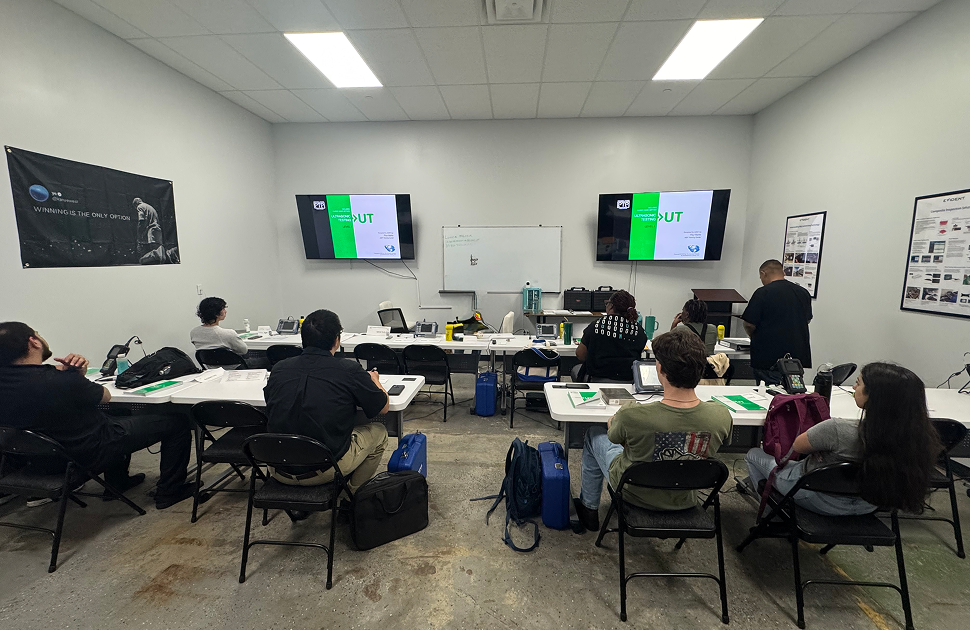Non-destructive testing (NDT) is the invisible shield of modern industry. From aerospace to petrochemicals, it ensures structural integrity and public safety where failure is not an option. While inspection technologies continue to evolve from phased array and 3D scanning to computed radiography, one constant remains: success depends on well-trained people. Inspectors, not just instruments, make the difference.
To grow the workforce we need tomorrow, we must start building today with a clear path from awareness to employment. That path should include early exposure, structured training, on-the-job skill building, and mentorship that passes down tribal knowledge while lifting new talent up.
One of the most effective entry points is pre-apprenticeship. By introducing NDT through dual-credit classes in high school, with real-world certifications and hands-on labs, students begin developing technical fluency well before graduation. When they enter the workforce or pursue full-time training, they already understand the tools, terms, and expectations of the field.
Equally important is helping students understand what NDT work actually looks like. This is not a desk job. Inspectors in refinery, pipeline, or offshore roles often work 60+ hours per week, in extreme heat, remote locations, and high-pressure situations. Assignments may require travel for weeks or months at a time, hair follicle drug testing, HUET certification, and TWIC clearance. These aren’t just jobs, they’re industrial commitments. But for those who commit, the payoff is real. Starting pay ranges from $18 to $25 an hour, with rapid increases as skills, reliability, and availability improve.
Once a clear picture of the industry is in place, training becomes the next step. Training can be taught by any ASNT Level III—an individual certified by the American Society for Nondestructive Testing (ASNT), the leading professional organisation that sets the industry standard for certification, training, and technical guidance in nondestructive testing (NDT). In good standing, who holds certification in the method they teach. Some Level IIIs operate private schools, others teach within trade programs or partner with short-term academies. Community colleges also offer NDT degrees, although these are not always accompanied by industry-recognised certifications. Some students pay out-of-pocket or take on student loans, while others access tuition-free options through registered apprenticeships or WIOA-funded programs. The goal is not just certification — it's comprehension. Great training teaches how to perform the work, why it matters, and how to stay ahead as technology and standards evolve.
Some students take individual classes over time, while others enroll in bundled or comprehensive programs. Not all courses result in industry-recognised certifications, and not all credentials are equal. True industry certifications must align with SNT-TC-1A or ISO 9712 and be taught by certified Level III instructors, ensuring quality, compliance, and employer trust.
But the real development begins after training, through on-the-job experience. Before a technician can reach Level II status, they must complete hundreds of documented hours per method. These OJT logs, verified by both employer and technician, become essential career currency when switching companies or advancing into new techniques. Once hours are complete and exams are passed, the technician is certified under the company’s written practice. In many cases, employers conduct in-house testing to ensure safety and proficiency, a necessity in high-risk environments.
Unfortunately, the status quo has shifted toward hiring ready-made Level IIs rather than developing talent internally. This leads to high turnover as technicians switch companies for incremental pay raises, while assistants are left without a clear advancement path. A structured plan changes that. With consistent mentorship, access to flaw sets, calibration tools, and hands-on time, an assistant can gain over 700 hours of experience in six months, enough to certify in one or more methods within 8–10 months. What’s required isn’t more time, it’s better planning.
Workforce development doesn’t stop at Level II. Upskilling must be a priority — advancing existing employees into new technologies like Phased Array, TOFD, Creaform 3D scanning, ISQ, CR/DR, and thermography. In parallel, these advancing Level IIs should train and mentor assistants rising behind them. This cycle ensures every technician becomes a trainer, every assistant has a roadmap, and talent grows from within.
The long-term goal is simple: don’t hire your next Level II, build them. Train every inspector not just to inspect, but to lead. Make mentorship a cultural expectation. When internal development becomes second nature, companies gain more than workforce stability; they create legacy.
Finally, no career thrives in isolation. The NDT industry runs on reputation, not job boards. That means networking matters. Trainees and newcomers should actively seek mentors, connect with Level IIs and Level IIIs, and engage with hiring managers, especially on platforms like LinkedIn. Ask questions. Volunteer for site visits. Learn to follow and then learn to lead.
Because in NDT, we’re not just building pipelines and pressure vessels. We’re building people. And the best-built people build everything else.
About the Author
Patrick Kratochvil is the Texas Director of the American Aerospace Technical Academy (AATA). A nonprofit workforce training provider registered with the U.S. Department of Labor. Based in Houston, he works across the Gulf Coast to build NDT career pathways that align training. certification, and employer demand from high school pre-apprenticeship to full-time technician placement.
Author: Patrick Kratochvil










